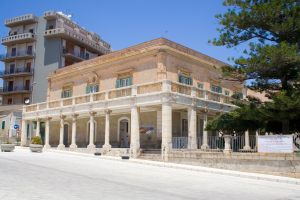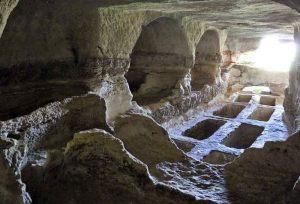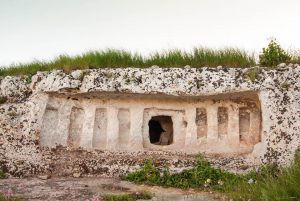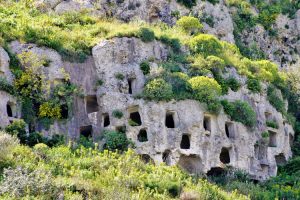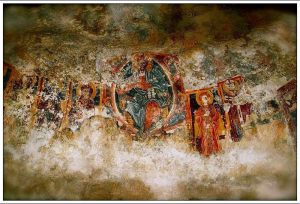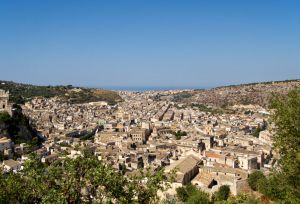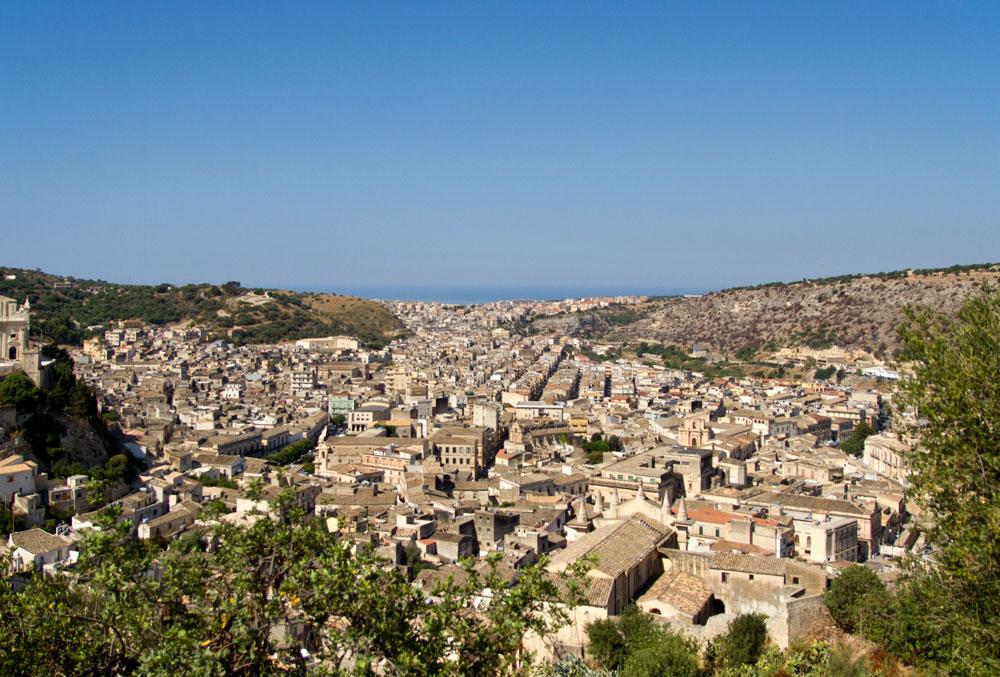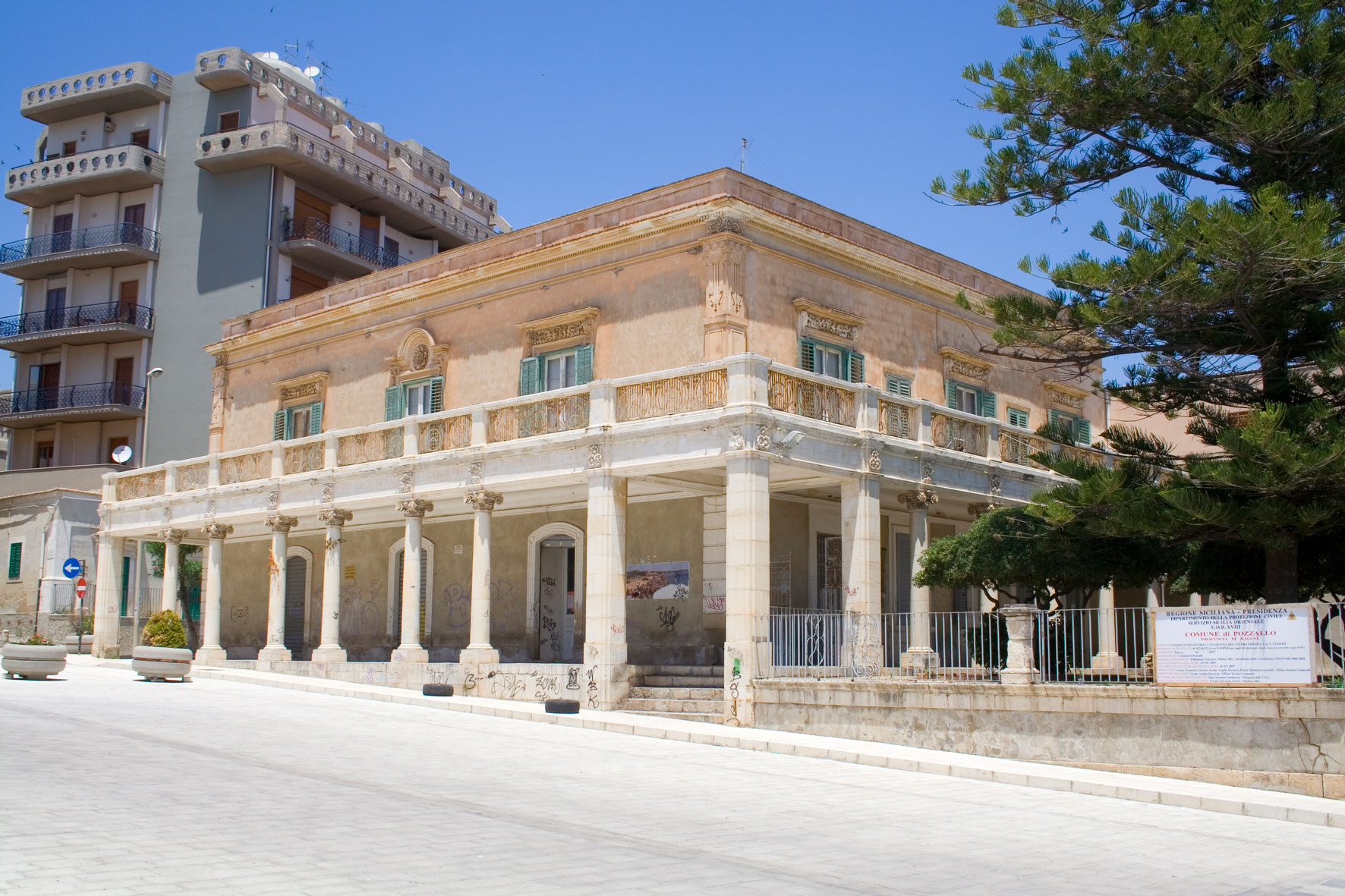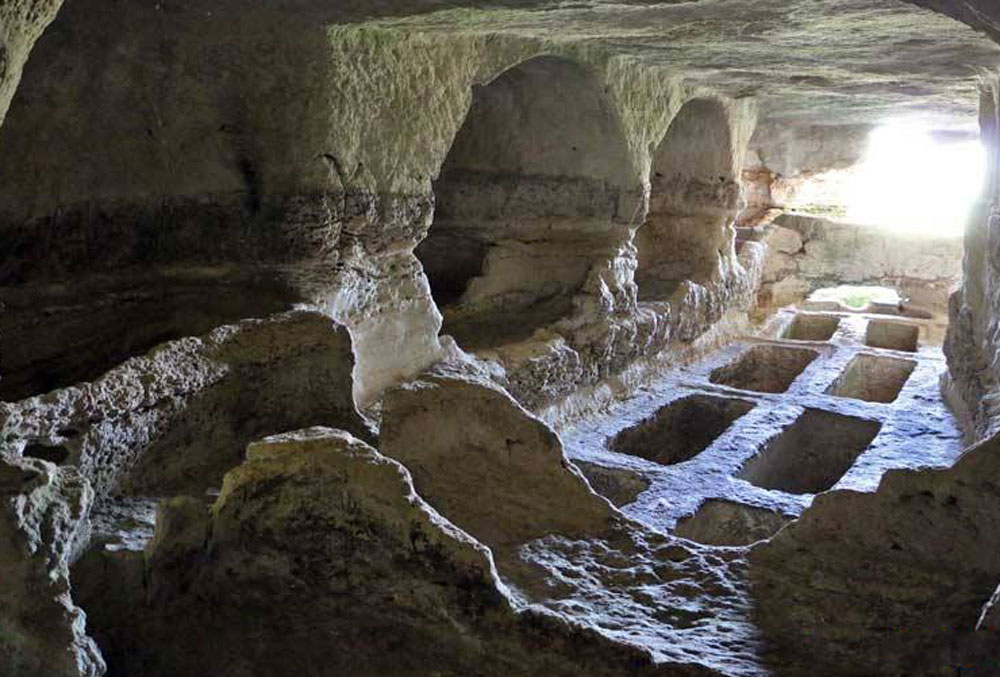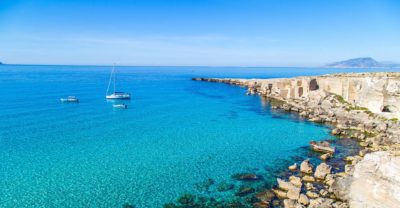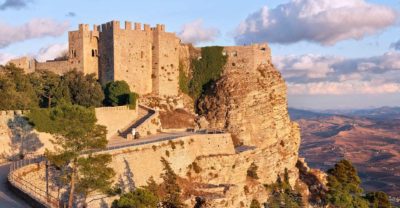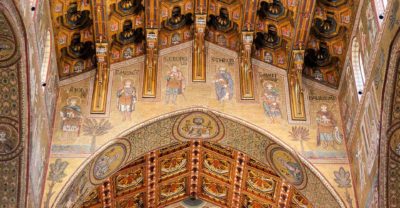Archeological sites Ragusa
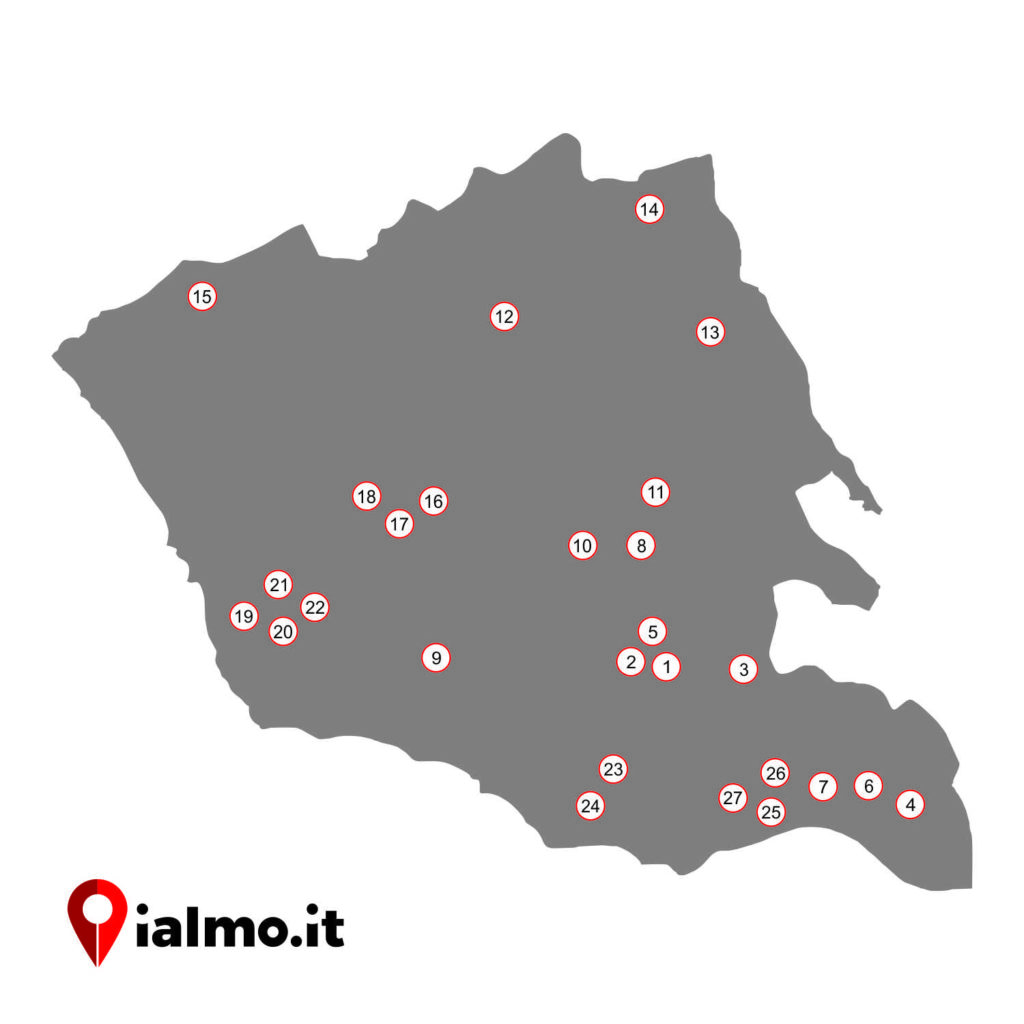
Cava Lazzaro, Modica: one of the most impressive archeological sites dated to the Paleolithic. It presents both oven and anterooms caves, besides Templar caves for religious rites with hand-made excavation and pillars.
Certainly reserved for an important local personality, Tomba Orsi (Orsis Tomb) has a great archeological relevance with its large façade decorated with false pillars on which geometric symbols have been carved; it was named after its discoverer, the archeologist Paolo Orsi.
Ancient objects were then found in Cava Lazzaro such as amygdale instruments, crockery and glassware of Castelluccio culture, various pre-Sicles artifacts dating to 22nd-15th century BC, and kept in the Civic Museum of Modica. In addition, they have found Neanderthal a skull kept today in the Entonographical Museum L. Pigorini, Rome.
Cava dei Servi, Modica: here rocky walls alternate with overhanging rock-face plains or deep ravines flooded by the water of the stream Tellesimo. Its complex yet diversified morphology gives a special charm to the area, thanks also to the abundant vegetation on the sides and bottom of the valley. Since Pre-history, Cava dei Servi has been inhabited by men. Upon a hill named Cozzo Croce there are indeed some necropolis probably dating to the Bronze Age, with two dolmens built with large slabs embedded in the ground and arranged in a circle, besides some other cave tombs and enchytrismòs.
Cava Ispica, North side, Modica: it is the most famous valley of west Sicily. With its 13-km length it extends upon the territories of Modica, Ispica and Rosolini. The stream that runs through the valley is called Pernamazzoni in the north and Busaitone in the south. With rocky walls suitable for human habitation, in the northern part of the valley there are prehistorical necropolis, Christian catacombs, hermitages and various types of settlements such as:
1. Larderia catacomb, a hypogenic graveyard that in almost 500 sq.m. holds 464 tombs all in three subterranean galleries (the major one is about 30-meters long). The site is a real rock town where, close to the caves inhabited by men and their pets, there were others used as warehouses or sanctuaries with altars and frescos made on the bare rocks.
2. The gymnasium, a place carved in the rock dating to the Hellenist-roman age and recently unearthed. It consists of two communicating halls, equipped with lateral seats. The chamber on the right presents a collapsed wall and is provided with baths. In the chamber on the left it is still possible to see the engravings in Greek that indicated the number of the seats: P.R.E. stood for the seats reserved for elders, presbyteroi; N.E.O. indicated instead those for youngsters or neoteroi. The site was probably used as a plenary chamber where the members of the community used to meet.
3. The apothecary consists of a big quadrangular hall. Scores of shelves and cupboards are carved in the walls and were probably used to store jars for cremes, ointments and various herb-based potions. On the one side there are three irregular apses. A wide circular seat carved out of the rock occupies the majority of the surrounding wall.
A hole bored in the rock reminds of a mortar; so it is possible that the site was some kind of a “pharmacy”.
4. On the same side of the valley it is possible to visit the Salinitro, one of the most impressive complex consisting of other tombs and caves on top of one another, and which are now partly collapsed.
5. Going down south, on the left of the stream Busaitone, where also the Urutti Caruti (collapsed caves) overlook, there is the so called Camposanto.
It seems to be a Christian 4th-century necropolis: on the wall of one of sepulchers a Christian symbol had been engraved on the wall of one of sepulchers. In total there are 60 terricolous ditches, superimposed burial niches and numerous sarcophagi carved in the rock. There are two sections, the first one including 25 tombs placed randomly; in the second section – extending North – there are 24 tombs.
6. The five-floors Sicani Castle is entirely set in the rocks; an authentic monument carved in a calcareous wall that drops sheer for 30 m high, probably built over the years by different generation of workers. Almost every chamber has either a rectangular or a squared plan, with on the walls and for doors and windows. Almost all of the chambers get light from a long corridor that extends upon the external wall.
7. Grotta della Signora has a singular domed vault, a monumental example of tholos tomb in the northern part of the Cava. Since some pottery have been found, it is possible that the cave was used for either ritual or residential premises.
8. La Grotta dei Santi is in contrada Baravitalla, withing the complex of Cava Ispica,
Modica; it is a wide rectangular cave. Today it is still possible to see remains of frescoes portraying 36 saints whose faces have been damaged over the years.
Cava Ispica, South side, Ispica: known as Parco Forza, it is an area where remains dating to the Bronze age (19th-15th century BC) have been found, especially fragments of small amphoras, pithoi, stone tools made of flint and obsidian. Other findings date to 10th and 9th century BC, to the last stage of the Pantalica culture and the Greek colonization.
Small sanctuaries of the Paleochristian-Byzantine age were found on the walls of the surrounding hills. Concerning the Medieval age and the Renaissance, there are still evidences of a fortification probably dating to the 15th and 16th centuries AC.
The Antiquarium of the park holds findings dating to a period that goes from the first half of the Bronze age to 1693. On the south side of Cava d’Ispica prevail defensing emplacements like the Fortilitium, natural fort consisting of a hard-calcareous mass.
It is then possible to find:
1. The Fortilitium o Forza, fortified residence of the feudal lords of the Statella family; it dominated the urban area of Spaccaforno and acted as a barrier; a massive castle protected by natural cliffs and a with drawbridge. A great portal gave access to the castle; at both sides of the portal there were two others smaller doors. Unfortunately only a few part of the ancient walls have lasted the earthquake in 1693.
Some excavation campaigns have uncovered the floor of the ancient church inside the castle, that dedicate to SS. Annunziata. Interesting is the stable, (10×10 meters) a huge cave where the Forza horses were kept. The mangers carved in the rock are still visible, as well as the eyelets to bind the animals. There is also a part where the hay was placed, rooms used as a warehouse and also the hall of the armigers.
2. The Palace of a Marquis, located on the west side of the fort, has a L-shaped plan; in front of it there is a courtyard paved with pebbles. The services spaces, with barns set into the floor, are still visible on the right side. The origin of some ceramic Byzantine findings let the archeologists think the building date to the same period.
The palace, razed by the earthquake in 1693, was not rebuilt.
3. Saint Pancratius’ Church could have been considered a small Byzantine basilica with three apses; today only the ruins of the external walls remain, alongside with part of the apses and some evidences of the calcareous floor and the following opus signium. This is the only example of non-cave construction in the valley.
4. The covenant, placed in an almost inaccessible location, is a complex overlooking directly the valley. On the upper floor there is a corridor that give access to tiny rooms, either rectangular or squared, comparable to small cells. It is thought that it could had been a monasterion, as also the small oratory dedicated to Saint Alexandra – very close to the covenant and consisting of two separate chambers – would indicate. In the first chamber there are the remains of a fresco portraying the Saint; the smaller and second one still presents a rocky floor with a circular hole for water gathering. High in sulfur, this water is considered a great remedy for skin diseases.
Saint Nikolas cave church, Modica: it presents amazing late Byzantine frescoes painted on the bare rock and dating to 12th-16th century (the date ‘1594’ was painted on the rock next to a picture). It is an artificial cave in the core of town, where it is possible to admire different series of frescoes; it is a cave church that the historians consider unique in the Medieval scene of Sicily. The major fresco depicts Christ Pantocrator in the center of the apse: a blessing Christ inscribed in an almond-shaped figure, seated on a throne between two pairs of angels. On the right side of the apse there is a baptismal conch hewn out of rock. After several excavations crypts and tombs have been found.
Necropolis Contrada Crocefia, Ispica: on November 2, 2013, 300 m west from Cava Ispica, a new necropolis was found. Ragusa Bureau of Cultural heritage stated that this necropolis dates to the late antiquity. The necropolis counts about 20 loculi all facing east. In the same site and the immediate surroundings several covering have been found.
St. Marc’s catacumbs, Ispica: 2 km far from the residential are, these constitute a token of the presence of Christians in the territory during the late antiquity.
Trabacche cave, Ragusa: it is a small catacomb dating to 4th century AC, in the Roman-Byzantine age. The hypogeum consists of two big chambers; two monumental sarcophagi arise right at the site entrance, and they present some pillars carved in the rock, similar to canopies. The two major tombs are surrounded by hollows along the walls where arched niche can be seen. The French painter Jean Houel depicted the site in ‘700; more recently it was chosen as the set of one of the first episodes of the famous tv series Il Commissario Montalbano.
Fontana nuova, Marina di Ragusa, Ragusa: in one of the caves they have found some and knapped stone blades dating to the Upper Paleolithic. The Hyblean archeological museum holds the majority of the findings.
Monte Arcibessi, Ragusa: in this area there are fortified settlements – castellieri – dating to the Bronze and Iron age. In addition, there are prehistorical settlements, ancient Greek remains, tokens of the Hellenist-Roman age and also Byzantine and Medieval ruins.
Castiglione, Ragusa: it is Siculian-Greek settlement which still hosts the ruins of two wide districts dating to VI c. BC, some forts, a urban road, a sacred site and a Greek necropolis. Among the most significant findings of the whole Hyblean area there is the Warrior of Castiglione, basso-rilievo carved out from a single calcareous slab and representing a soldier on his horse advancing towards the left, the ends of the block are decorated with the protomes of a bull and a sphinx.
Archeological site in Contrada Scornavacche, Chiaramonte Gulfi: dating to IV-III c., this site presents a regular urban structure with parallel streets, rectangular blocks where there are residential buildings with a regular plan, with living spaces placed all around an inner courtyard. There is also a sacred site and one dedicated to crafts including numerous kilns to mold clay. Among the object made out of clay found there is a votive statue dedicated to Athena Ergane and a kylix with an inscription engraved after firing. The inscriptions found let them think about the existence of a temple dedicated to Asclepius.
Roman Villa in contrada Orto Mosaico, Giarratana: discovered in the late 1800, since 1989 it has been the subject of a massive excavation campaign. Dating to the 3rd century, it has a 2.000-sq.m. extension, with a mosaic floor.
Consisting of three pavilions placed all around a central space, the building has a monumental structure, double-leaf masonry walls made of lava stone from Monte Lauro. Closer to the Villa two sculptures have been found: a female head and a marble rilievo representing Hermes and Aphrodite.
Calaforno nature park, Monterosso Almo – Giarratana (vedi video): within a verdant forest there is a small medieval sanctuary dedicated to Saint Rosalie, born in 1130 and died in 1166. In the same area there is also the Grotta dei Santi e dei Dinàri (Cave of Saints and fortune). Although it might not be famous, this is one of the most relevant archeological sites.
La Grotta dei Santi is a religious complex dating to the late Copper age and consisting of two sepulchral hypogenic constructions, of which one was then turned into a cave church. The apse has a great historical and artistic relevance since it is carved out of the rock and finely decorated during the Byzantine age. The complex consists of about 3-meters 35 circular rooms placed in a sequential yet irregular order. A little bit further there is the Grotta dei Dinàri (Cave of furtune), named after a legend according to which only who knows the magic formulas will be able to unveil the treasures hidden in the cave.
Poggio Biddini, Acate: it the most ancient settlement dating to the Neolithic and located on the right shore of the Dirillo river. Thanks to the excavations conducted by the archeologist Biagio Pace, in the valley they found some interesting tokens of the Roman age which might be ruins of the town of Bidis, mentioned in the historical records.
Cava Porcaro Archeological Nature park, Comiso: Archeological site of significant historical and landscape value, it is located on the Hyblean Mountains, south-east of the residential area of Comiso. It holds several archeological records such as the Christian hypogeal catacombs (4th century AC), typical of the provincial area. The landscape has never changed throughout the centuries, maintaining the same beauty, alternating deep valleys with steep slopes. The park extends over about 27 hectares between the two streams Cucca and Porcaro at an altitude of 300 and 400 m above sea-level. It originally rose from a valley that turns towards Comiso; from above it is possible to observe the entire plain that extends up towards Gela and the sea.
Terme Romane di Diana, Comiso: built between the 2nd and 3rd century, between the Ippari and Diana fount. The excavations carried out during 1900, highlighting the work of Biagio Pace (1935), uncovered a fine mosaic floor with decorations representing Neptune, the Nereids and some mermans. Also the tepidarium, the calidarium, the nynphaeum and an alveus were found.
Regional archeological museum of Camarina, Vittoria: located close to Scoglitti, the museum holds archeological findings coming from the necropolis of Kamarina and its surroundings. A section is entirely dedicated to underwater archeology, exhibiting amphoras and findings discovered on wreckes found offshore. As the ruins of the ancient walls and a great tower prove, the ancient colony of Kamarina rose on three hills. In addition, there are ruins of some Hellenistic houses such as the House of the altar, the House of the inscription and the Merchant’s house.
Parco archeologico di Kaukana, Santa Croce Camerina (vedi video): along the coast of Santa Croce Camerina, between Casuzze and Punta Secca. Kaukana was mentioned in the late ancient records as an important Sicilian berth, significant for the connection among Sicily, the Mediterranean islands and north Africa. Procopius of Cesarea (Byzantine historian of the Giustinian age, 490-565 AC) describes it as a berth useful for the military operations towards North Africa; the historian reports how in 533 the navy of general Belisarius stopped there over before leaving for Malta to reconquer Africa, occupied by Vandals since 439. After Kamarina was razed by Romans in 258 BC, the survivors settled in Kaukana. Thankfully the sand has preserved the site to date. The ruins of the ancient urban area consist of 25 building with rectangular plans and composed of two or three rooms; but there are also more impressive buildings, with more rooms and floors as well, stairs and apsed courtyards, all placed around a small cemeterial church. It is still visible the plan of the church which consists of one nave and two aisles; in the nave there is a fine mosaic floor decorated with both human and animal figures. Outside there are tombs, some of which “a bauletto” (box tombs). The site was studied by the famous archeologist Paolo Orsi, and the finding discovered are now hold in the Archeology museum of Ragusa.
Mirio necropolis, Santa Croce Camerina: it is a funerary site where 42 tombs of the 5th century AC were found. Along the coast there are still some remains of the towers built in 15th/18th century to protect the territory: the most relevant are the tower of Vigliena and Torre di Mezzo, dating to 1600 and recently restored.
Saint Helen’s ruins, Santa Croce Camerina: in the area known as chiusa di Santalena numerous sepulchral works and ruins of an ancient farmhouse where, until the last great war, there still were walls with frescos dedicated to Saint Helen.
Basilichetta and catacombs of Pirrera, Santa Croce Camerina: it is a funerary complex with a small Byzantine basilica dating to the 5th century AC. The building consists of a nave and two aisles with mosaic floors and tombs on the sides.
Chiafura, Scicli: upon one side of Saint Matthew’s hill, it extends from Saint Bartolomeus’ valley up to the top of the hill where there is the Norman tower called Castellaccio, and also the Three cantons Castle. Chiafura consists of a series of caves and valley upon the rocky terraces along the sides of the mountain. They are usually preceded by a strip of land and some contemporary masonry buildings touching the rocky walls.
It was a funerary site between 5th-7th century AC in the Byzantine era; then between the 8th and the 15th centuries a urban area rose and the area was fortified. During the 9th century the phenomenon of troglodytism (the use of living in the caves) spread probably due to the Arabic conquest (864/865) and the arrival of population from northern Africa. The phenomenon increased under the Norman rule (started in 1091) and due to the immigrants coming from the troglodyte areas of the south of Italy. The urban area continued to expand up until the 15th when it started to extend on the valley. The district maintained its strategic relevance until 1700, when this area stopped growing.
Scicli: site of Grotta Maggiore, dating to the 5th millennium BC – 18th -15th century BC; in contrada Ronna Fridda there are two necropolis, a prehistorical one dating to the middle Bronze age (14th – 12th centuries) and a Christian one of the 4th century AC.; Cancellieri, a Hellenistic site dating from 4th up to 2nd century BC, and including a 4th-century Greek farm.
Necropolis of contrada Bellamagna, Pozzallo: it is an archeological site of Castelluccio culture which was present in Sicily during the Copper age (2.200-1.450 BC). The cave necropolis of Bellamagna consists of 87 hypogenic caves (underground constructions built into natural hollows) of circular plan, in which there are also niches.
The ruins of Contrada Porrello, Pozzallo: archeological site dating to the Greek age, it consists of the ruins of an Emporion, a complex of warehouses located along the coast and used as a store-room. Among the discoveries there are numerous ceramic fragments and a Paleo Christian funerary site.
Pozzallo: in Contrada Cozzo Rao there is a prehistorical settlement dating to Castelluccio culture (First Bronze age, 19th –14th BC); in the site of Contrada Carpintera there is a late Roman necropolis (4th century AC); Pietre Nere, Late Byzantine furnaces (8th century AC) and medieval (9th century AC); Bosco Pisana, Roman necropolis (3rd century AC); the ruins of Contrada Casello – Recupero, an area that includes the ruins of a vast rural settlement dating back to the Roman age.
